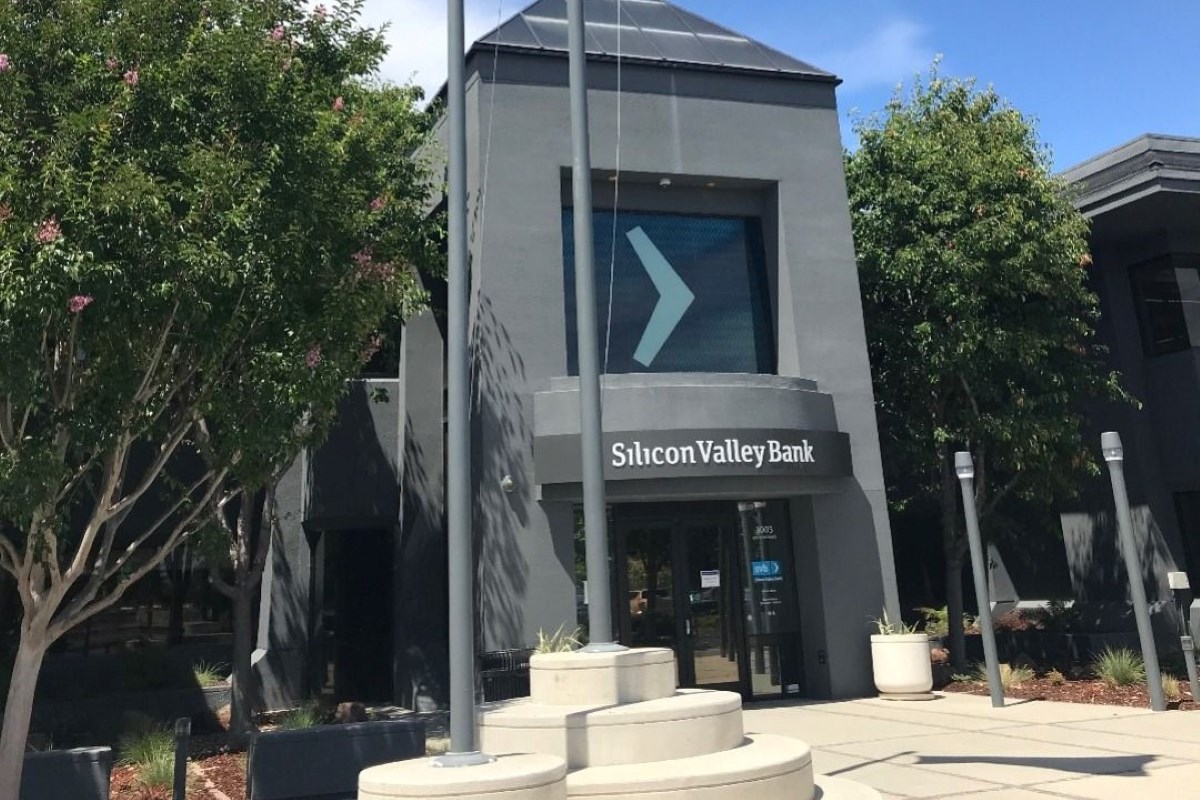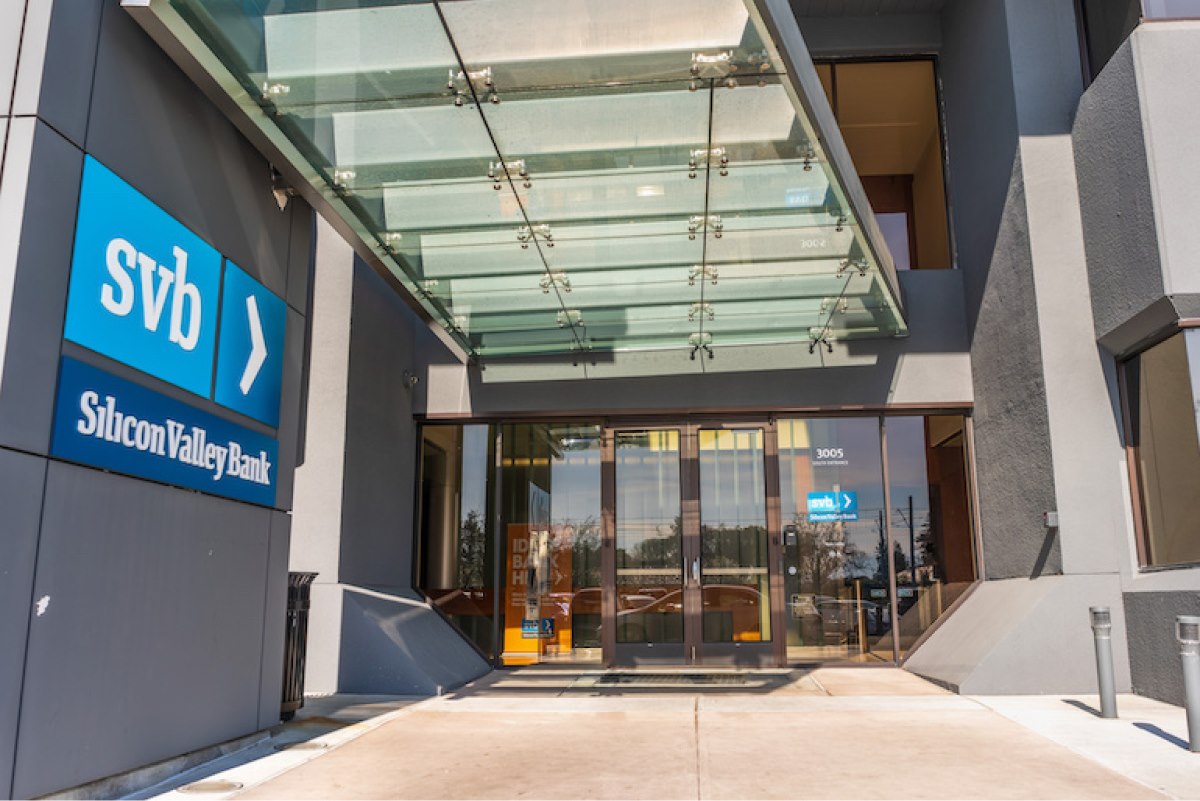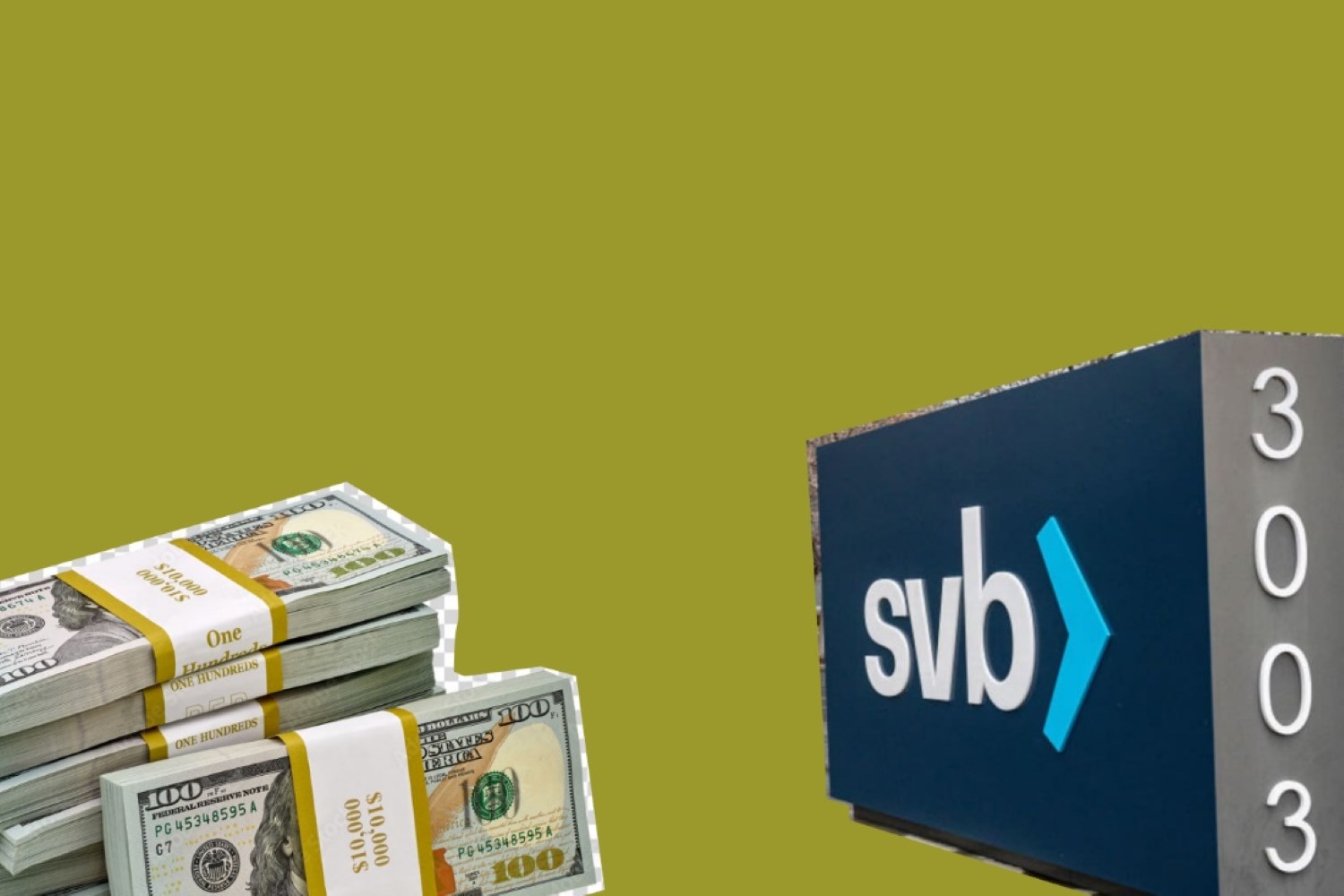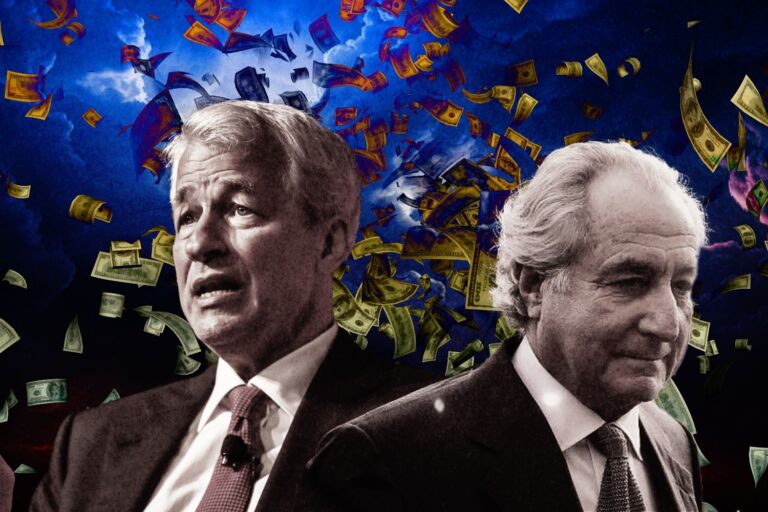Twilight of Silicon Valley Bank – When the Premium Wine Expired
The economy has just recovered from the COVID-related Great Recession, but it seems like we just enter the century of anarchy since chaos has been repetitively taking place. When the pandemic arrived, we understood how harsh the taste of the storm was.
Now, Covid 19 has already dissolved. When we were enjoying a little moment of peace, watching the sun rise, then the collapse of Silicon Valley bank came, the light grows dark as heavy clouds takes over the sky, a sign of a new recession started to resonate.
Silicon Valley Bank was shut down in March 2023 by the California Department of Financial Protection and Innovation. Based in Santa Clara, California, the bank was closed after its investments greatly decreased in value and its depositors withdrew large amounts of money, among other factors.
In this moment, the top question is what exactly went wrong with Silicon Valley Bank. This piece of writing will help you understand its collapse, which was – in fact – foreseen years ago.
The Bank of Burgeoning Tech Sector for Years
Founded in 1983, Silicon Valley Bank (SVB) works with technology, life science, cleantech, venture capital, private equity, and premium wine businesses.
Undoubtedly, SVB held a prominent position in the innovation economy, serving as the technological industry’s skeleton for this legendary Silicon Valley zone. It contributed significantly to the startup ecosystem by offering specialized financial services, sector knowledge, a priceless network, and a solid reputation.
The financial firm is renowned for placing a significant emphasis on innovation and entrepreneurship and for providing a comprehensive range of financial services that are specifically designed to satisfy the demands of high-growth businesses and startups. Commercial and international banking, asset management, venture debt financing, private equity, and other customized solutions are some of these services.
Yesterday, SVB was still such a beautiful place that its collapse shook the whole industry. So, what happened to this financial behemoth?

48 Hours to Pull the Behemoth to the Bottom
Silicon Valley Bank reported a $1.8 billion loss on the sale of assets, including mortgage and Treasury bonds, on March 8, 2023.
After the announcement of failure, on March 9, shares of Silicon Valley Bank fell 60% in response to investor concern about the bank’s distressed financial position.
Depositors in Silicon Valley Bank, a relatively small group made up largely of venture capital firms and tech startups, began to withdraw their funds from the bank. According to Bloomberg, Peter Thiel’s venture capital firm Founders Fund withdrew all of its deposits.
And all of a sudden, the end of Silicon Valley bank was marked on March 10. The quick withdrawal of funds gained momentum, placing Silicon Valley Bank on the brink of collapse as this bank could not generate enough cash to fit the demands of depositors.
SVB’s collapse was caused by dislocations sparked by rising rates, which are its origin. SVB ran out of money as startup clients withdrew deposits to keep their businesses afloat in a frigid environment for Initial Public Offerings (IPOs) and private fundraising. It was compelled to sell all of its bonds that were on the market for a $1.8 billion loss.
One clear offender is that the bank broke one of the fundamental principles of finance, which is to diversify.
Initially, by positioning itself as the banking institution of choice for Silicon Valley venture capitalists and the businesses they supported, SVB grew to become the 16th-largest bank in the nation. Yet in doing so, it also made itself extremely reliant on the strength of the tech sector as well as the decisions made by a relatively small number of venture capitalists and business owners.
The more the bank’s prosperity depends on this “thin ice”, the more vulnerable it is.
In fact, it’s difficult to overstate how unusual a bank SVB was. Its assets peaked at more than $200 billion, although it had fewer than 38,000 business accounts and few private consumers.
Also, its clientele was mostly undiversified: the majority of its deposits came from venture capital funds, tech, and life science companies, and the majority of its loans also went to those businesses. SVB made a deliberate decision to do this; in practice, it frequently stipulated as a requirement for funding that businesses use it exclusively for banking.
This was great for SVB during the boom years of 2020 and 2021: Its total deposits more than tripled in two years. Nevertheless, SVB’s clients—many of whom were startups that weren’t producing money but were spending it—began to withdraw money rather than deposit it when the tech bubble turned into a crash by the end of 2022, burning cash to stay afloat.
This would not have been an issue, except for the fact that SVB had used a significant portion of those deposits in 2020 and 2021 to purchase mortgage-backed securities and long-term treasuries with extremely low interest rates.
Due to the fact that none of the assets it purchased were at risk of default, this wasn’t an entirely careless choice. But it did put SVB in a very risky position if interest rates shot up because falling bond values are a result of rising interest rates.
And that, of course, is exactly what happened in 2022. The result was that by the end of 2022, SVB was sitting on $16 billion in unrealized losses on its investment portfolio, meaning that on a mark-to-market basis, its assets barely covered its liabilities.
SVB would have been subject to stricter restrictions and stress tests if it had been a larger bank, which most likely would have prevented it from falling into such a deep hole. Nonetheless, the bank had successfully advocated for the relaxation of those regulations for institutions of its size in 2018.

SVB nevertheless had more than enough liquidity to meet a typical pace of withdrawals, and last week it revealed a strategy to strengthen its cash position by offloading a portion of its bond portfolio and generating money through the sale of shares.
Investors became anxious because when a bank told them not to worry, it made them question what you should be worried about. But SVB might have been able to weather the storm if it had a more traditional, diverse customer base. Instead, its heavy reliance on Silicon Valley, and in particular on the VC community, came back to bite it.
Grand Failure That Freaks the Whole National Economy
The SVB is so crucial to the tech industry that it funded about half of all venture-backed technology and healthcare startups in the United States. Because they backed new businesses that other banks wouldn’t accept owing to higher risks, SVB stood as a favorite bank for the technology sector.
Because of this, when news of Silicon Valley Bank’s failure spread, it revealed a significant risk that many banks confront in their corporate portfolios: reliance on uninsured deposits.
Experts are concerned that SVB is not the only bank holding enormous amounts of bond losses. Former Federal Deposit Insurance Corporation (FDIC) chairman William Isaac has issued a warning about the possibility of a string of lender failures that might trigger a banking crisis akin to the one that occurred in the 1980s.
Wall Street is concerned that the collapse of Silicon Valley Bank has dramatically increased the likelihood of a US recession.
The main worry is that the incident has hindered the Federal Reserve’s efforts to battle inflation, according to experts, and that the upheaval may be a diversion that will be bad for the economy for the remainder of this year.
In March, Goldman Sachs increased the likelihood of a recession this year from 25% to 35%, citing recent volatility and short-term stress related to the collapse of SVB.
Investors agree based on indications in the bond market: in early March, the inversion between the 2-year and 10-year Treasury yields, a well-known marker of an impending recession, started flashing its biggest recession warning in 42 years.
“At this point, with the de-inversion happening, the four-to-six-month time window is starting to seem much more plausible,” the “Bond King” Jeffrey Gundlach said of his recession outlook in a recent interview on CNBC.
Fed fund futures are pricing in 75 basis-points of rate cuts by the end of 2023. That predicts that before year’s end, markets will need major monetary easing, which indicates that investors anticipate the Fed will soon be concerned about mitigating the effects of a downturn.
“I think a recession is extremely likely. I don’t really see a pass through the next 12 months without getting a recession,” DataTrek co-founder Nicholas Colas told Insider. He predicted that once the Fed announced its next course of action at its meeting on March 21–22, it would be easier to gauge the severity of an impending slump.
In front of the storm, many are quivering, but some have raised a brighter viewpoint. Former Treasury chief Larry Summers took a less pessimistic view, saying SVB’s collapse was “unlikely to be a broadly systemic problem.” The failure of SVB, according to Capra Bank CEO, may actually increase Americans’ trust in the financial system.
Without a doubt, SVB’s demise is a major event. Despite how horrible it is, analysts predict that it won’t lead to another global financial crisis like the one that occurred in 2008 and caused the Great Recession. That’s because the current financial landscape has evolved a lot since then.
As the dust began to settle in the wake of the catastrophic bank collapse, related characters around the country quickly recognized the urgent need to reassess their risk management strategies and strengthen their defenses against potential future crises.
Giants to Take Steps Protecting Themselves
After halting payments over the weekend following the U.S. government shutdown of the bank last week, Etsy resumed paying merchants with Silicon Valley Bank accounts on March 13.
According to Etsy, 2,700 merchants, or 0.5% of active sellers, experienced payment delays on Friday as a result of SVB’s failure. An Etsy representative told Reuters on March 13: “We are trying to pay these sellers today, and we’ve already started processing payments via another payment partner this morning.”
While some Etsy sellers claim they have gotten their payments on time, others elected to put their stores on vacation mode and halt customer sales in an effort to limit their financial losses.
Shopify, the e-commerce platform that provides websites and apps to stores, has stopped paying online vendors with Silicon Valley Bank accounts and advised them to transfer accounts in order to get paid.
According to a person familiar with the situation, Block, Inc., which handles credit card payments for both online and brick-and-mortar shops, started halting payments to their merchants’ SVB accounts on Friday and demanded that they change their banking information.
Selling a firm to someone whose sole business account was with SVB can be challenging. Due to the payment holds, thousands of online marketplace merchants and mom-and-pop stores had to rush to change their banks and struggle to acquire access to money for fresh product inventories.
As the devastating consequences of the bank collapse reverberated throughout the global economy, it became increasingly clear that decisive action was necessary to restore stability and prevent further financial chaos. The urgent need for intervention highlighted the crucial role governments had to play in addressing the current crisis and ensuring a more resilient financial system in the future.
Government’s Response on the Implosion
To prevent financial instability from extending, regulators want to implement a firewall to stop market sentiment from collapsing. To make sure of that, the Fed established a new Bank Term Financing Program (BTFP).
The BTFP will provide liquidity against high-quality securities, removing the need for fire sales, by providing loans of up to one year in length to a variety of financial institutions (banks, savings associations, credit unions, and other eligible depository institutions) that can pledge a variety of assets (Treasury securities, agency debt and mortgage-backed securities, and other qualifying assets) as collateral.

Policymakers have also stated that they will compensate all depositors, including those who are technically uninsured. In principle, SVB might sell its high-quality liquid assets and utilize the proceeds to reimburse depositors; however, doing so would result in losses being realized.
The sale of SVB to a bigger organization that can keep the held-to-maturity securities to maturity is the more likely outcome. SVB’s UK business was sold to HSBC, and First Citizens Bank was the one shows its interest to acquire SVB after the collapse.
On March 13, Treasury Secretary Yellen gave her approval to measures that will allow the FDIC to finish resolving SVB in a way that properly protects all depositors.
The taxpayers won’t be responsible for any losses related to the resolution. Shareholders and some other holders of unsecured debt, however, will not be protected. Also, senior management was fired.
In an effort to safeguard depositors, the Federal Deposit Insurance Corporation, which guards the stability of the financial system, assumed control of Silicon Valley Bank. Depositors are assured protection of up to $250,000 in funds for various types of accounts kept because the bank is FDIC-insured.
To lessen the harm caused by the failure of Silicon Valley Bank and other issues, President Biden said consumers of American banks should have faith that their money will be there when they need it. He also pledged responsibility for bank executives and investors.
Biden’s words didn’t stop anxiety over the banking urgent situation from banging stock prices of financial institutions. For regional and mid-sized banks, the suffering was particularly severe.
Small Businesses and the Financial Sector Bear the Brunt
SVB stockholders and investors took a big hit because, unlike customers, they were not backed by FDIC on their investment. Lack of funds from deposits for urgent needs like payroll is one of the other problems. Etsy, Roblox, Rocket Labs, and Roku are a few large tech businesses that have a sizable investment in SVB.

Most banks are covered by the FDIC. Yet, the accounts were only $250,000 fully insured. This is not much when dealing with business accounts because they may spend millions in a month.
Together with Silicon Valley Bank, Credit Suisse and Signature Bank were also having problems with their solvency. On March 19, UBS and the government-brokered transaction to acquire Credit Suisse for $3.25 billion (or $3.25 billion) in Swiss francs.
On March 19, New York Community Bank and Signature Bank reached an agreement for a $2.7 billion purchase of a significant piece of Signature Bank. Flagstar Bank, a division of New York Community Bank, will be the name of the Signature Bank’s locations.
Six regional banks, including Comerica Bank, First Republic Bank, Intrust Financial, UMB Financial, Western Alliance Bancorporation, and Zions Corp., were placed under examination by Moody’s Investor Service on March 14 for credit rating downgrades.
High unrealized losses and sizable quantities of deposits not protected by the FDIC are two factors contributing to these scores. These problems also had an effect on SVB.
The most pressing issue now is the technology sector, which has been hit with downturn situations, forcing big technology companies to cut employees. One of their most ardent fans has now passed away. Startups may have trouble getting finance because other banks’ management teams are reluctant to take the investment risk.
Bottom Lines
Silicon Valley Bank President and CEO Greg Becker, who led the financial institution for more than a decade before its collapse, has resigned from the board of directors of Silicon Valley Leadership Group. Concerns about the financial organization’s survival have been raised by his abrupt departure from the powerful board.
But it comes immediately after his resignation. In a message to customers, Tim Mayopoulos, the new CEO of Silicon Valley Bank, addressed the bank’s failure and assured them that the institution is “open and conducting business as usual.” Even so, with the ongoing setting, his saying seems off.
For startups who are trying to succeed yet may fail through no fault of their own, this is a really sad situation. The demise of SVB serves as a reminder that businesses that depend on vital technology must take precautions against the unforeseen.
In this unusual case, the technology vendors likely seemed to be in a fairly solid condition, were well-funded, and were expanding; no one would have predicted a run on a reputable bank would lead to their own death.









